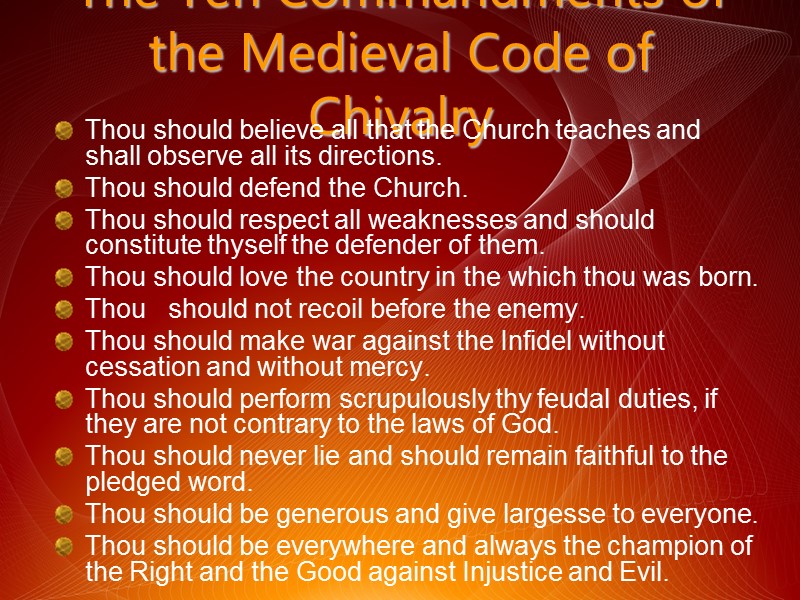

Completing any task or challenge that has been startedĪ knight’s duty to God under chivalry included being faithful to God, being faithful to the church, always being a proponent of good against evil, and putting the worship of God above all others, even the feudal lord. Never retaliating upon a foe, but never refusing a challenge from an equal. Other attributes of warrior chivalry included: Later works on war and warfare often drew from De Re Militari, such as HonoreBonet’sL’arbes des batailles. De Re Militari was translated into French in the 13th century as L’art de chevalerie. An example of this is De Re Militari, a handbook on war and warfare written by Vegetius. Medieval courtly literature glorifies the ideologies and valor of the ancient Romans. Though it is called warrior chivalry, over half of the entries in the Knights codes of Chivalry relate to acts of chivalry rather than acts of combat. An example of warrior chivalry in the Middle Ages was Sir Gawain in Sir Gawain and the Green Knight and The Wedding of Sir Gawain and Dame Ragnelle. This type of chivalry also calls for knights to put others’ lives before their own. To the knights, this was the most important type of chivalry. Sometimes referred to as “warrior chivalry,” this area of chivalry deals with a knight’s virtuous traits such as valor, honor and protecting the poor. These three areas intertwined often and were sometimes hard to distinguish. These included duties to countrymen, duties to God and duties to women. There were three types of chivalry in the Middle Ages. Both movements also required taking a vow and the logging of activities. Both of these movements sanctified members through fights against supposed “infidels,” while protecting religious pilgrims. The first known chivalric movements were comparable in nature to the monastic orders of the time. Europe desperately sought to control more land during the Middle Ages. The first appearance of chivalry in the Middle Ages was seen in military activities against non-Christian states. 
KNIGHT CHIVALRY CODE CODE
The French term chevalier, the Spanish term caballero, and the Italian term cavaliere, all meaning “warrior on horseback” came together to form “chivalry.” While the term was originally used the same as it had been previously (for warriors on horseback) it became known as a broad term for the code of conduct followed by knights. The term chivalry was derived from several different languages.

Chivalry in the Middle Ages may also refer to an idealized life and a knight’s manners while among his court. The code varied, but it often emphasized honor, courage and service. Chivalry in the Middle Ages was a moral, religious and social code of knightly and courtly conduct.







 0 kommentar(er)
0 kommentar(er)
